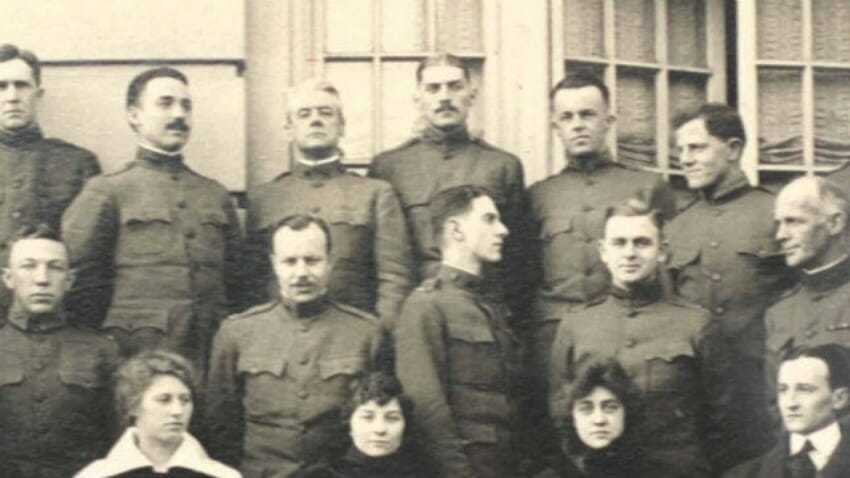William Friedman and Elizebeth Friedman: Among the 400.000 tombs at the Arlington National Cemetery (the American Military Cemetery in Virginia) is the tomb of William and Elizebeth Friedman's encryption pioneers.
Decades after the tomb of the tomb, which contained a tribute from her husband to her husband, was discovered to contain an encrypted message. 
William, 1891 was born, and Elizabeth a year later. They married 1917.
The pair trained the first executives of American code-breakers in the so-called Baconian cipher developed by the British cryptographer Sir Francis Bacon.
William Friedman coined the term cryptanalysis and more or less broke the basic Japanese encryption used in World War II called Purple, because all notes were filed in purple folders.
Meanwhile, Elizabeth was America's first cryptanalyst and encouraged her husband to continue with her cryptography. He worked with the American government and helped break the German one code Enigma during WWII.
In 1969, at the age of 78, William died and was buried in Arlington. His wife designed his tombstone with the symbol of William's military unit - and one of his favorite phrases: "Knowledge is power", an excerpt attributed to Sir Francis.
The same phrase appears encrypted in 1918 code-breakers graduation photo, in which some of the students were looking at the side while others were directly in the camera. The direction of their faces described a phrase using the Baconian cipher.

According to Sir Francis' code each letter in the alphabet could be represented by one team five letters "a" or "b". For example, N is 'abbaa' and O is 'abbab'.
In class photography, turning the face of the person's face forward or laterally with "α" or "β", the message can be read: KNOWLEDGE IS POWER.
Cryptographer Elonka Dunin visited the tomb of the Friedmans and noticed something strange. The phrase "Knowledge is power" that existed on the stone using a combination of serif and sans-serif letters.

Assuming that the letters of one font (serif) represent b and san-serif characters a, the phrase can be converted to babaa aabab aabab, if you remove the last letter r.
This sequence in Baconian encryption translates to WFF, the initials of William. Dunin said at this year's Shooocon Computer Security Conference in Washington on Friday that he thought it was a hidden note from William Friedman's husband when he designed his tombstone.
The couple had a reputation for such things. Together they wrote a book called 1957 called The Shakespearean Ciphers Examined. The book repeatedly reported that Sir Francis wrote many of Bard's works and left coded clues in his manuscripts.
At σελίδα 257 of the book, in the bottom paragraph, the authors used bold letters while others left them normal. When translated using Bacon's cipher, the message read: "I did not write the works, F Bacon."
The final confirmation of Dunin's theory of the tombstone came about after examining Friedman's papers in his library Marshall. There was a note from Elizabeth showing how the WFF message was created - cutting out the "Knowledge is Power" sentence

Like all mortals, cryptographers die - but their hidden notes live on for decades, if not forever.
Text icons: theregister





